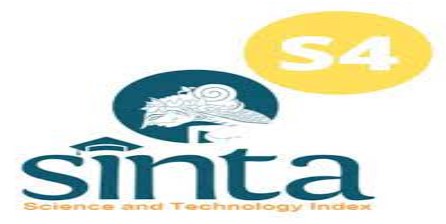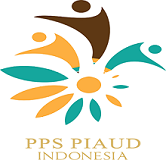Author Guidelines
English:
- The article or manuscript must have relevance to the PIAUD field
- Manuscripts published in the Journal of Generasi Emas, Islamic Early Childhood Education, Universitas Islam Riau have never been published in any journal or publication.
- Manuscripts published in the Journal of Islamic Education Children of the Early Generation of the Golden Age Islamic University of Riau are literature studies and research articles. which is done individually or in groups.
- The manuscript will be review by the editorial board based on the recommendation from reviewers. Manuscripts can be accepted, rejected, or accepted with repairs that can be revised within the time limit specified by the editorial board.
- The editorial board has the right to change the content or order of writing without changing the substance of the content.
- Manuscripts are typed 1.5 spaces on A4 paper, with Times New Roman font size 12pt, around ± 20 pages, including tables, graphs, diagrams, images, and bibliography. Upper/lower/left/child consecutive margin: 4/3/3/3. Prints of document file format (via CD/print out, email) are sent to the editor's address.
- The contents of the research article must contain the components below:
- Title
Briefly written in solid, and must describe the research variables, made in Times New Roman capital letters, size 14pt, bold, center.
- Writer's name
Written without titles given an index (superscript) 1,2,3, and so on followed by the name of the study program.
- Abstract
Written in Indonesian and English, which consists of 150-250 words. The abstract contains problems, objectives, methods, and results of research.
- Keyword/keyword
The main words in the study reflect the research variables and the theories referred to. Keywords are written in English. Written under abstract with a distance of one line.
- Fill in the manuscript:
- Introduction
The introductory section contains background, research context, results of literature review and research objectives. all introductory sections are explained in an integrated manner in paragraphs, with a length of 15-20% of the total length of the article.
- Methods
The research method section contains exposures in the form of paragraphs about research design, data sources, data collection techniques, and data analysis that is actually carried out by researchers, with a length of 10-15% of the total length of the article.
- Results and discussion
The research results section contains exposure to the results of the analysis related to the research questions. each research result must be discussed. the discussion contains the meaning of the results and comparison with the theories and/results of similar research. the length of exposure to results and discussion is 40-60% of the total length of the article.
- Conclusion
The conclusions section contains research findings in the form of answers to research questions or in the form of summary results. conclusions are presented in paragraph form.
- Reference source
Using body notes
- references
The reference list only contains the sources referenced, and all sources are relevant and up to date sources/last 10 years. The references used are primary sources in the form of research articles in research journals or reports (including theses, theses, dissertations).
- Email the editor: [email protected]
Indonesian
1. Naskah tulisan harus mempunyai relevansi dengan bidang PIAUD
2. Naskah dimuat dalam Generasi Emas: Jurnal Pendidikan Islam Anak Usia Dini Universitas Islam Riau, belum pernah dimuat dalam jurnal atau publikasi manapun.
3. Naskah yang dimuat dalam Generasi Emas: Jurnal Pendidikan Islam Anak Usia Dini Universitas Islam Riau adalah kajian pustaka dan artikel hasil penelitian. yang dilakukan secara individual maupun kelompok.
4. Naskah akan direview oleh dewan redaksi. Naskah dapat diterima, ditolak, atau diterima dengan perbaikan dapat direvisi dalam batas waktu yang ditentukan oleh dewan redaksi.
5. Dewan redaksi berhak mengubah isi ataupun tata tulis naskah tanpa mengubah substansi isi.
6. Naskah diketik 1.15 spasi pada kertas A4, dengan huruf Times New Roman ukuran 12pt, berkisar ± 20 halaman, termasuk tabel, grafik, diagram, gambar, dan daftar pustaka. Margin atas/bawah/kiri/kanak berurutan: 4/3/3/3. Cetakan naskah file berformat dokumen (via CD/ print out, email) dikirim ke alamat redaksi.
7. Isi artikel penelitian harus memuat komponen di bawah ini:
a. Judul
Ditulis dengan singkat padat, dan harus menggambarkan variabel-variabel penelitian, dibuat dengan huruf kapital Times New Roman, ukuran 14pt, bold, center.
b. Nama penulis
Ditulis tanpa gelar diberi indeks (superscript) 1,2,3, dan seterusnya yang diikuti dengan nama program studi.
c. Abstract
Ditulis dalam bahasa Indonesia dan Inggris, yang terdiri dari 150-250 kata. Abstract memuat permasalahan, tujuan, metode, dan hasil penelitian.
d. Keyword/ kata kunci
Kata-kata pokok dalam penelitian yang mencerminkan variabel penelitian dan teori yang diacu. Keyword ditulis dalam bahasa Inggris. Ditulis dibawah abstract dengan jarak satu baris.
e. Isi naskah:
1. Pendahuluan
Bagian pendahuluan berisi latar belakang, konteks penelitian, hasil kajian pustaka dan tujuan penelitian. seluruh bagian pendahuluan dipaparkan secara terintegrasi dalam bentuk paragraf-paragraf, dengan panjang 15-20% dari total panjang artikel.
2. Metode Penelitian
Bagian metode penelitian berisi paparan dalam bentuk paragraf tentang rancangan penelitian, sumber data, teknik pengumpulan data, dan analisis data yang secara nyata dilakukan oleh peneliti, dengan panjang 10-15% dari total panjang artikel.
3. Hasil dan pembahasan
Bagian hasil penelitian berisi paparan hasil analisis yang berkaitan dnegan pertanyaan penelitian. setiap hasil penelitian harus dibahas. pembahasan berisi pemaknaan hasil dan pembandingan dengan teori dan atau hasil penelitian sejenis. panjang paparan hasil dan pembahasan 40-60% dari total panjang artikel.
4. Kesimpulan
Bagian kesimpulan berisi temuan penelitian yang berupa jawaban atas pertanyaan penelitian atau berupa intisari hasil pembahasan. kesimpulan disajikan dalam bentuk paragraf.
f. Sumber referensi
Menggunakan catatan tubuh/body note
g. Daftar rujukan
Daftar rujukan hanya memuat sumber-sumber yang dirujuk, dan semua sumber merupakan sumber yang relevan dan up to date/10 tahun terakhir. Rujukan yang digunakan adalah sumber-sumber primer berupa artikel-artikel penelitian dalam jurnal atau laporan penelitian (termasuk skripsi, tesis, disertasi).
8. Email redaksi: [email protected]










